The second summer rolls around, I can’t get enough of lavender. This gorgeous ornamental is a garden staple, filling the air with a sweet fragrance and attracting your favourite pollinators. Get more of this purple perennial and learn how to propagate lavender cuttings from your garden today.
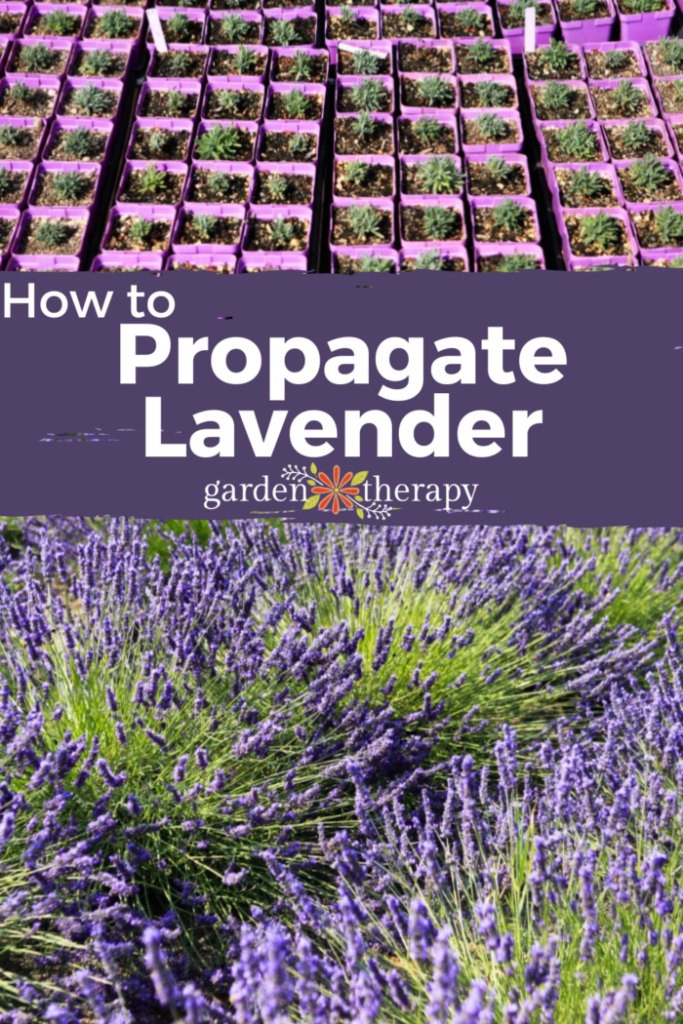
Why would you want more lavender? Well, why wouldn’t you! It has the most delightful scent that is beloved in aromatherapy. It is known for its relaxing and calming properties, helping to ease stress and insomnia.
Beyond aromatherapy, it also has a delicate floral taste that I adore in cooking. Believe it or not, some people propagate lavender just for culinary purposes.
The plant itself is also a garden relish. It is extremely hardy and drought-resistant, making it a dreamy, low-maintenance plant. The bees adore lavender and I am always happy to invite more of them into my garden. And to top it off, they are deer AND rabbit resistant. Booya!
If you’re here already, I’m sure I don’t have to convince you how awesome lavender is. But I will never miss out on an opportunity to gush about one of my favourite plants. So without further ado, here is everything you need to know about how to propagate lavender.
This post will cover…
- Expert Tips for Propagating Lavender
- How to Propagate Lavender from Cuttings
- Take Your Cutting
- Plant Your Lavender Cutting
- Lavender Cutting Care
- Frequently Asked Questions About Propagating Lavender
- What to Do with Lavender
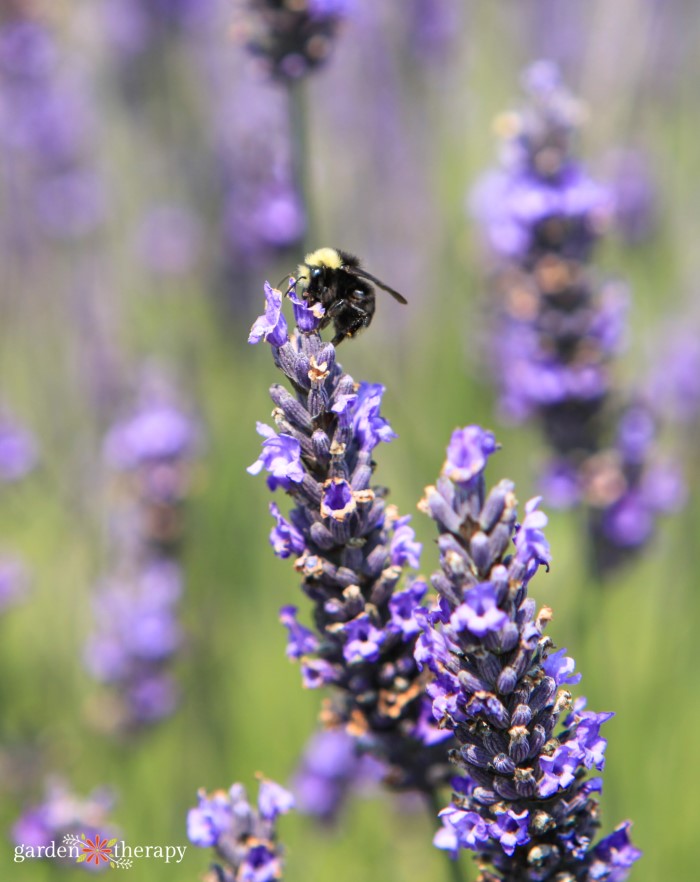
Expert Tips for Propagating Lavender
- Only take cuttings from healthy softwood stems. Softwood stems are new growth that is lighter in colour and more flexible than older hardwood stems.
- Take cuttings with no flowers or buds on them, typically during mid-summer when the plant is actively growing.
- Immediately place the cutting in a moist paper towel or water until you can plant it.
- Remove the bottom two inches of leaves, then place either in soil 2 inches deep or in water. Lavender will grow easily in water, but the transplant rate is lower than those grown in soil.
- Keep the cutting moist and place it somewhere warm and out of direct sunlight.
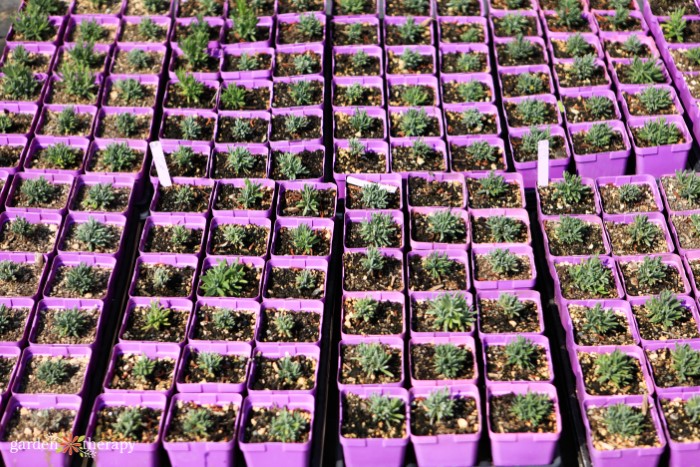
How to Propagate Lavender from Cuttings
If you want lavender, you can easily get a whole garden full of the herb from a single plant. The best way to propagate lavender is by taking stem cuttings. The first step to getting a successful lavender cutting is by making the right selection.
To get the best yield possible, you want only to select cuttings from a healthy part of the plant, free of pests and diseases. I like to choose side shoots from areas with lots of foliage so they won’t be missed.
On the lavender plant, you will see softwood and hardwood. You want to trim softwood only. It is lighter in colour and more flexible than hardwood. This is the newer growth, and it will root easier.
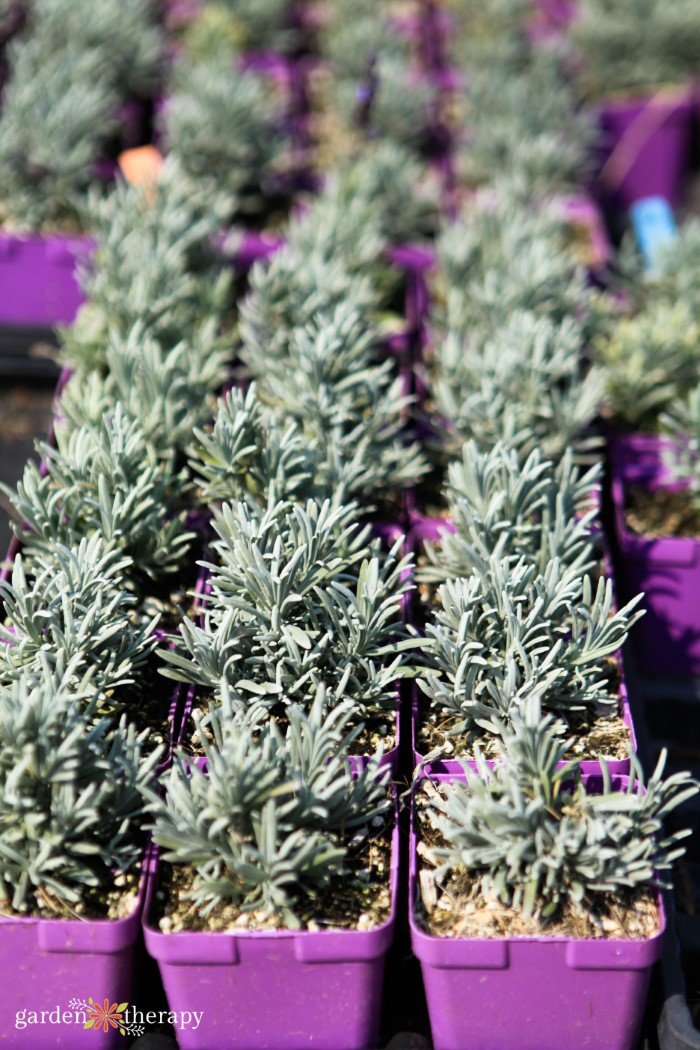
Take Your Cutting
Grab a sharp knife, disinfect it with soapy water, and then with rubbing alcohol. Cut a softwood stem with no flowers or buds on it. The cutting should be 3-4 inches long.
Once you have your cutting, immediately wrap it in a moist paper towel or place it in a bucket or cup of water. Keep your lavender cutting cool until you are ready to plant it. Ideally, you should plant this cutting within 24 hours after taking it.
Plant Your Lavender Cutting
When you’re ready to plant your cutting in soil, remove all the leaves from the bottom two inches of the stem. You will also want to scrape the skin off the stem on one side of the bottom two inches.
You can place your cutting directly in the soil or dip it in a rooting hormone like willow water first. However, lavender does root quite easily, so don’t worry if you don’t have any rooting hormone on hand.
Poke your finger, a chopstick, or a pencil in the soil two inches deep. Place your stem in and pack the surrounding soil so the plant is standing straight up.
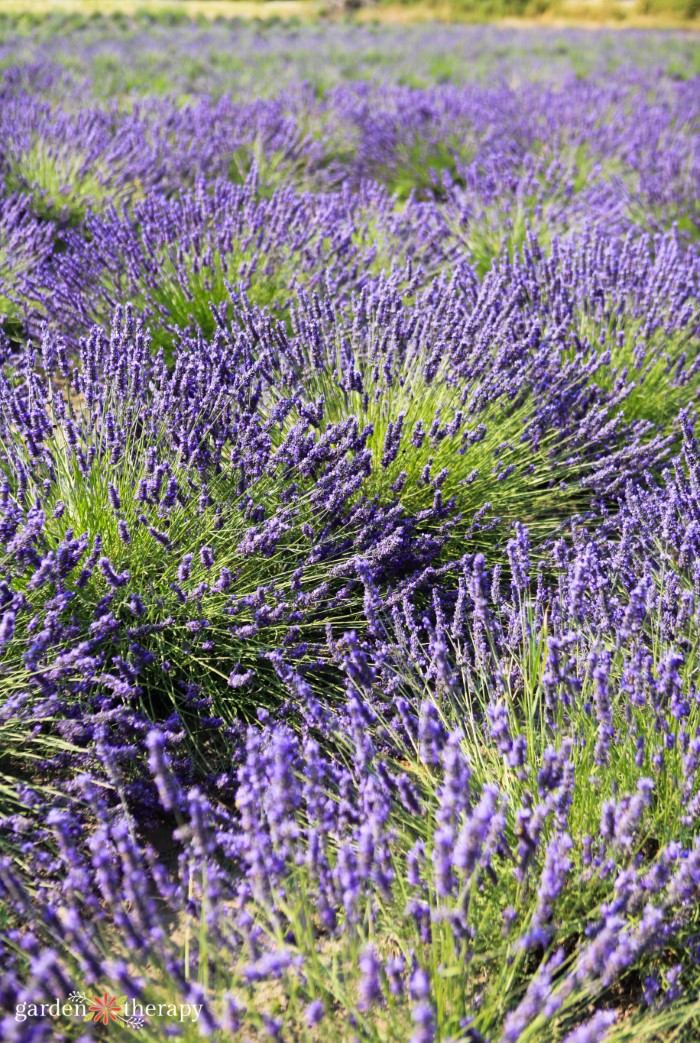
Lavender Cutting Care
To make a mini-greenhouse for your lavender cutting, carefully place a zip-top bag over the cutting. Place your cutting in a warm area that is out of direct sunlight. Keep the cutting moist, but release condensation from the bag every few days so the leaves don’t get soggy.
Once there is new growth, remove the bag and reduce humidity. Let the soil dry completely between watering. You can also begin to fertilize the cutting at this stage to encourage quicker growth.
Once there are full, new leaves, your lavender is ready for transplant. Take it to its new permanent home!
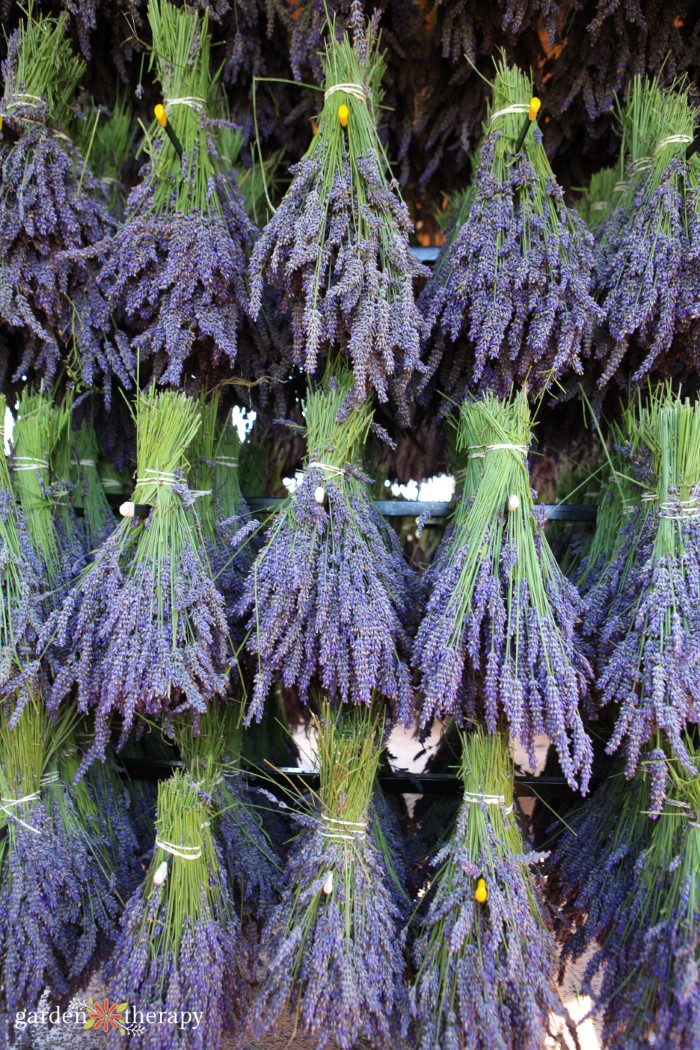
Frequently Asked Questions About Propagating Lavender
In my lavender propagation instructions, you probably noticed I mentioned placing the cutting directly in the soil. However, this is not the only way to root a lavender cutting.
Lavender will actually take easier to water propagation. BUT, the success rate for transplanting the cutting will be much lower. So, if you want to try propagating lavender with water, keep this in mind!
Once your lavender cutting has significant roots, about an inch long, you can put your cuttings in soil.
The best time of year to propagate lavender is during its active growth season and when the plant is not currently flowering. If you take your cutting too late in the summer or fall, it may not root as the plant could be dormant.
Snip your cuttings in the morning when the air is nice and cool. This way, your lavender plants aren’t under any further stress from heat.
Lavender cuttings should be taken during the active growth season between flowerings. This typically falls between July and August.
Patience is hard when it comes to propagating lavender! Luckily, lavender roots quite easily. You can expect to wait two to four weeks for softwood cuttings to take root.
Older hardwood cuttings will take much longer. I usually avoid snipping or pruning hardwood on a lavender plant unless it gets very unruly.
Place your lavender cutting outside of direct sunlight, as the cuttings are delicate and could burn with too much sun. Absolutely ensure it’s protected from the afternoon sun. However, you want it to stay warm, so south-facing windows are great options.
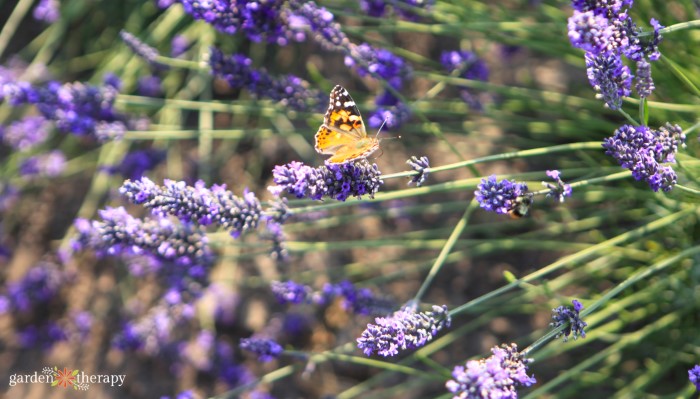
That’s everything you need to know on how to propagate lavender! Let me know in the comments below where you plan to grow your new lavender babies.
What to Do with Lavender
Now that you have plenty of new plant babies, you may be wondering what to do with it all. First, make sure you harvest lavender properly. Then, the sky’s the limit! Here are a few suggestions:

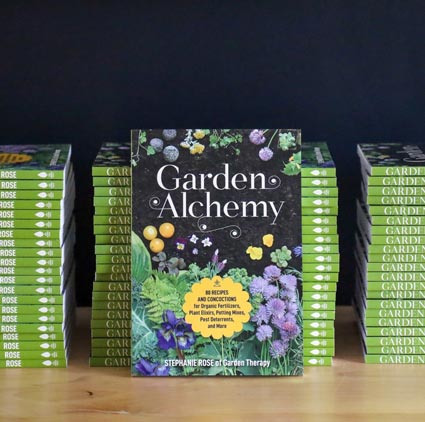


Thank you for the article! In my experience Jan-March work the best (northern CA). Later is real tough.
Thanks for that great information! Also where did those pictures of lavender fields come from-would be great to take a tour. Thanks
Hello!
I live in Northern California (Sacramento area) and there are several lavender varieties available. Do you you know which varieties are most fragrant? Which is best to use for this method of propagation?
Garden therapy is real… I’ve experienced it in my life as well over the last five years. I just found your site and will be definitely be returning!
Thank you for sharing your story and gardening insight!
I live in Dublin a bit below you in zone 9a. There are three basic types. Lavandula augustifolia is the fragrant lavender most people think of. It’s a bit more cold hardy but doesn’t take the heat quite as well. You usually hear this called “English lavender”. Then there is what we call “French lavender” or lavandula dentata. This is the one with the fringed or feathered-looking leaves. It smells a bit more like rosemary but it is beautiful and groes in zones maybe 8 to 10. Mine blooms literally year round, so it’s a beautiful ornamental but not one you would really use for tea. “Spanish lavender” or lavandula stoecha smells a bit more like augustifolia and grows more in the dentata range. It’s the one with fatter flower stalks that has the cute little butterfly petals on top. That one also comes in pink. Augustifolia comes in pink and white varieties as well as the deep bluish purple you’ve seen in pictures. Few nurseries carry dentata and often call it “frinded”.. Check your growing zone to see what’s best for your needs.
What does the new growth look like? Am I looking for vertical growth? Thanks!